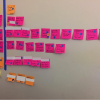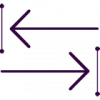 |
Document Why as Well as What: Finding the Purpose of Your Software Code can express what we want to accomplish, but it’s a little more difficult to express why we’re doing something in the first place. The people who maintain code are often not those who originally wrote it, so documenting why helps set a context and gives clues as to what the author was thinking when they came up with a particular design, making developers' jobs easier.
|
|
 |
Using Sprints for Agile Coaching Discussing the work to be done as a group, building in short iterations, getting feedback, and looking for ways to improve are not just practices for development teams—it is an effective way to achieve any goal. Here, Ben Kopel details his experience of working with other agile coaches in a sprint to hire a new ScrumMaster.
|
|
 |
Using Agile to Lead Your Agile Transformation There's something ironic about starting an agile transformation by spending six months creating a detailed transformation plan. We have to move away from a prescriptive playbook and toward a more responsive transformation model. Why not use the agile transformation as your first opportunity to be agile?
|
|
 |
8 Keys to Transforming into a High-Performance Agile Team Following an agile process alone will not guarantee your teams will be high performers. Teams undergo various challenges while transforming into a highly productive team. This article looks at the areas where teams generally struggle in adopting agile principles and the typical root causes for those struggles, as well as eight behaviors that can help drive teams toward greater success.
|
|
 |
Henry Ford: Master of Lean Agile Processes Henry Ford, founder of the Ford Motor Company, was a captain of industry who revolutionized production. He also was one of the greatest influencers of the processes we call lean and kanban today. John Yorke believes Ford's ideas about process improvement made him a pioneer for systems thinking and agile software development.
|
|
 |
Endgame Testing: Exploring Your Agile Product End to End The main goal of endgame testing is to test the system end to end from the user's perspective. This should ensure continuity between components developed by different teams, continuity in user experience, and successful integration of new features. Endgame testing will often identify gaps that are difficult to discover inside agile teams, including flows across the product.
|
|
 |
Slim Down Your Test Plan Documentation Test plans are essential for communicating intent and requirements for testing efforts, but excessive documentation creates confusion—or just goes unread. Try the 5W2H method. The name comes from the seven questions you ask: why, what, where, when, who, how, and how much. That's all you need to provide valuable feedback and develop a sufficient plan of action.
|
|
 |
Fixing a Broken Deployment Process When you have hundreds of applications performing various functions across several environments, it's tough to push all the code when it needs to be. Here are some steps to help your own team develop the internal tooling it requires to deploy thousands of applications if needed, all in a reliable, efficient manner.
|
|
 |
How Businesses Stay Agile: The Art of Being Retrospective The greatest use for agile in business is in changing how you tackle problems and projects. Rather than defining the whole project and setting a “way forward,” an agile approach takes things much more iteratively. That means meeting as a team on a frequent and regular basis to share problems and successes, then making improvements as needed—being retrospective.
|
|
 |
Streamline Your Agile Requirements by Avoiding Bloated Backlogs In agile development, a bloated backlog results from teams accumulating huge lists of requirements, usually in the form of user stories. Retaining every possible story for building the product weighs down the backlog while squeezing (or obscuring) the highest-value stories. The best way to help minimize this risk is to optimize the time spent defining and refining the product priorities.
|
|






















